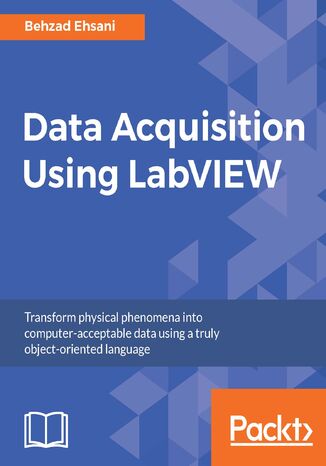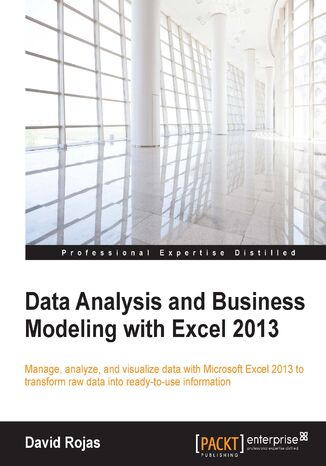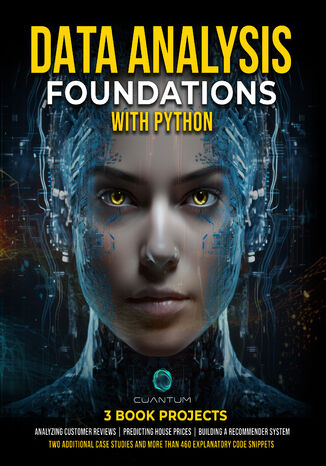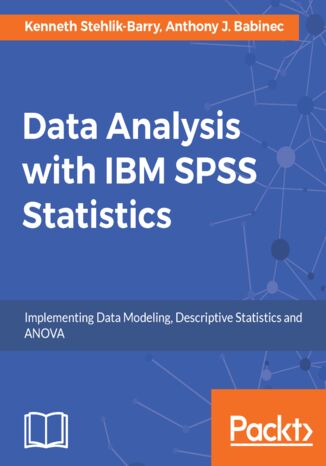Categories
Ebooks
-
Business and economy
- Bitcoin
- Businesswoman
- Coaching
- Controlling
- E-business
- Economy
- Finances
- Stocks and investments
- Personal competence
- Computer in the office
- Communication and negotiation
- Small company
- Marketing
- Motivation
- Multimedia trainings
- Real estate
- Persuasion and NLP
- Taxes
- Social policy
- Guides
- Presentations
- Leadership
- Public Relation
- Reports, analyses
- Secret
- Social Media
- Sales
- Start-up
- Your career
- Management
- Project management
- Human Resources
-
For children
-
For youth
-
Education
-
Encyclopedias, dictionaries
-
E-press
- Architektura i wnętrza
- Health and Safety
- Biznes i Ekonomia
- Home and garden
- E-business
- Ekonomia i finanse
- Esoterecism
- Finances
- Personal finance
- Business
- Photography
- Computer science
- HR & Payroll
- For women
- Computers, Excel
- Accounts
- Culture and literature
- Scientific and academic
- Environmental protection
- Opinion-forming
- Education
- Taxes
- Travelling
- Psychology
- Religion
- Agriculture
- Book and press market
- Transport and Spedition
- Healthand beauty
-
History
-
Computer science
- Office applications
- Data bases
- Bioinformatics
- IT business
- CAD/CAM
- Digital Lifestyle
- DTP
- Electronics
- Digital photography
- Computer graphics
- Games
- Hacking
- Hardware
- IT w ekonomii
- Scientific software package
- School textbooks
- Computer basics
- Programming
- Mobile programming
- Internet servers
- Computer networks
- Start-up
- Operational systems
- Artificial intelligence
- Technology for children
- Webmastering
-
Other
-
Foreign languages
-
Culture and art
-
School reading books
-
Literature
- Antology
- Ballade
- Biographies and autobiographies
- For adults
- Dramas
- Diaries, memoirs, letters
- Epic, epopee
- Essay
- Fantasy and science fiction
- Feuilletons
- Work of fiction
- Humour and satire
- Other
- Classical
- Crime fiction
- Non-fiction
- Fiction
- Mity i legendy
- Nobelists
- Novellas
- Moral
- Okultyzm i magia
- Short stories
- Memoirs
- Travelling
- Narrative poetry
- Poetry
- Politics
- Popular science
- Novel
- Historical novel
- Prose
- Adventure
- Journalism, publicism
- Reportage novels
- Romans i literatura obyczajowa
- Sensational
- Thriller, Horror
- Interviews and memoirs
-
Natural sciences
-
Social sciences
-
School textbooks
-
Popular science and academic
- Archeology
- Bibliotekoznawstwo
- Cinema studies
- Philology
- Polish philology
- Philosophy
- Finanse i bankowość
- Geography
- Economy
- Trade. World economy
- History and archeology
- History of art and architecture
- Cultural studies
- Linguistics
- Literary studies
- Logistics
- Maths
- Medicine
- Humanities
- Pedagogy
- Educational aids
- Popular science
- Other
- Psychology
- Sociology
- Theatre studies
- Theology
- Economic theories and teachings
- Transport i spedycja
- Physical education
- Zarządzanie i marketing
-
Guides
-
Game guides
-
Professional and specialist guides
-
Law
- Health and Safety
- History
- Road Code. Driving license
- Law studies
- Healthcare
- General. Compendium of knowledge
- Academic textbooks
- Other
- Construction and local law
- Civil law
- Financial law
- Economic law
- Economic and trade law
- Criminal law
- Criminal law. Criminal offenses. Criminology
- International law
- International law
- Health care law
- Educational law
- Tax law
- Labor and social security law
- Public, constitutional and administrative law
- Family and Guardianship Code
- agricultural law
- Social law, labour law
- European Union law
- Industry
- Agricultural and environmental
- Dictionaries and encyclopedia
- Public procurement
- Management
-
Tourist guides and travel
- Africa
- Albums
- Southern America
- North and Central America
- Australia, New Zealand, Oceania
- Austria
- Asia
- Balkans
- Middle East
- Bulgary
- China
- Croatia
- The Czech Republic
- Denmark
- Egipt
- Estonia
- Europe
- France
- Mountains
- Greece
- Spain
- Holand
- Iceland
- Lithuania
- Latvia
- Mapy, Plany miast, Atlasy
- Mini travel guides
- Germany
- Norway
- Active travelling
- Poland
- Portugal
- Other
- Przewodniki po hotelach i restauracjach
- Russia
- Romania
- Slovakia
- Slovenia
- Switzerland
- Sweden
- World
- Turkey
- Ukraine
- Hungary
- Great Britain
- Italy
-
Psychology
- Philosophy of life
- Kompetencje psychospołeczne
- Interpersonal communication
- Mindfulness
- General
- Persuasion and NLP
- Academic psychology
- Psychology of soul and mind
- Work psychology
- Relacje i związki
- Parenting and children psychology
- Problem solving
- Intellectual growth
- Secret
- Sexapeal
- Seduction
- Appearance and image
- Philosophy of life
-
Religion
-
Sport, fitness, diets
-
Technology and mechanics
Audiobooks
-
Business and economy
- Bitcoin
- Businesswoman
- Coaching
- Controlling
- E-business
- Economy
- Finances
- Stocks and investments
- Personal competence
- Communication and negotiation
- Small company
- Marketing
- Motivation
- Real estate
- Persuasion and NLP
- Taxes
- Social policy
- Guides
- Presentations
- Leadership
- Public Relation
- Secret
- Social Media
- Sales
- Start-up
- Your career
- Management
- Project management
- Human Resources
-
For children
-
For youth
-
Education
-
Encyclopedias, dictionaries
-
E-press
-
History
-
Computer science
-
Other
-
Foreign languages
-
Culture and art
-
School reading books
-
Literature
- Antology
- Ballade
- Biographies and autobiographies
- For adults
- Dramas
- Diaries, memoirs, letters
- Epic, epopee
- Essay
- Fantasy and science fiction
- Feuilletons
- Work of fiction
- Humour and satire
- Other
- Classical
- Crime fiction
- Non-fiction
- Fiction
- Mity i legendy
- Nobelists
- Novellas
- Moral
- Okultyzm i magia
- Short stories
- Memoirs
- Travelling
- Poetry
- Politics
- Popular science
- Novel
- Historical novel
- Prose
- Adventure
- Journalism, publicism
- Reportage novels
- Romans i literatura obyczajowa
- Sensational
- Thriller, Horror
- Interviews and memoirs
-
Natural sciences
-
Social sciences
-
Popular science and academic
-
Guides
-
Professional and specialist guides
-
Law
-
Tourist guides and travel
-
Psychology
- Philosophy of life
- Interpersonal communication
- Mindfulness
- General
- Persuasion and NLP
- Academic psychology
- Psychology of soul and mind
- Work psychology
- Relacje i związki
- Parenting and children psychology
- Problem solving
- Intellectual growth
- Secret
- Sexapeal
- Seduction
- Appearance and image
- Philosophy of life
-
Religion
-
Sport, fitness, diets
-
Technology and mechanics
Videocourses
-
Data bases
-
Big Data
-
Biznes, ekonomia i marketing
-
Cybersecurity
-
Data Science
-
DevOps
-
For children
-
Electronics
-
Graphics/Video/CAX
-
Games
-
Microsoft Office
-
Development tools
-
Programming
-
Personal growth
-
Computer networks
-
Operational systems
-
Software testing
-
Mobile devices
-
UX/UI
-
Web development
-
Management
Podcasts
Oscar Fingal O Flahertie Wills Wilde (1854-1900) war ein irischer Schriftsteller. Bekannt ist Wilde neben seinen hervorragenden Werken auch für seinen schwarzen Humor, den er nie verlor, auch in schweren Zeiten nicht. Oscar Wildes Dorian Gray ist eine der berühmtesten Figuren der Weltliteratur. Der elegant-zynische Dandy Dorian Gray hat sich ganz der Ästhetisierung seines Lebens verschrieben, ohne sich von moralischen Vorbehalten behindern zu lassen. Dorian stürzt sich haltlos ins lüsterne Londoner Nachtleben. Ausschweifung und Genuss wecken in ihm den innigen Wunsch nach unvergänglicher Jugend und auf wundersame Weise altert fortan nicht mehr er selbst, sondern ein Porträt von ihm. Schließlich zeigt das Gemälde die verzerrte Fratze eines alten Wüstlings ein Spiegelbild seines Inneren, dem der von Gewissensbissen gequälte Dorian nicht länger standzuhalten vermag.
Verführung, Leidenschaft und die Chance einer neuen Liebe. Eine schreckliche Wahrheit, die zwei Leben für immer verändern wird. Venetia Aston-Montagu ist in Italiens faszinierendste Stadt gezogen, um im Architekturbüro ihrer Patentante zu arbeiten und eine verlorene Liebe hinter sich zu lassen. Zehn Jahre lang hat sie eine Mauer um ihr Herz errichtet, die eines Abends beim Karneval eingerissen wird, als ein enigmatischer Fremder, Paolo Barone, sie vor maskierten Angreifern rettet. Venetia, die sich trotz der Warnungen vor Paolos Ruf als Don Juan und Gerüchten über eine Geliebte zu ihm hingezogen fühlt, kann sich nicht gegen die sengende Leidenschaft wehren, die zwischen den beiden aufflammt. Als sie einen Auftrag auf seinem herrlichen Anwesen tief in der Toskana bekommt, muss sich Venetia nicht nur einer wunderschönen jungen Rivalin stellen, sondern auch einem heimtückischen Grafen und dunklen Mächten in den Schatten, die sich zwischen das Paar stellen möchten. Kann Venetia darauf vertrauen, dass die Liebe selbst ihre eigenen Dämonen besiegen wird? Oder wird Paolos wohlbehütetes, erschütterndes Geheimnis die beiden für immer entzweien?
Im Entscheidungskampf auf der Insel Coiba wird ein Atombrand verursacht. Trotz aller Versuche kann er nicht gelöscht werden. Vom Planeten Venus werden verschlüsselte Signale von deren ehemaligen Siedlern den Uraniden empfangen. Diese enthalten wertvolle Informationen über Techniken und Innovationen, die weit über das menschliche Wissen hinausgehen. Der letzte Uranide, der mit seinem Wissen die Erde noch retten könnte, ist jedoch tot. Die Suche nach dem Erbe beginnt.
Eugenie Marlitt (1825-1887) war eine deutsche Schriftstellerin. Sie wird als erste Bestsellerautorin der Welt angesehen. Eugenie Marlitt arbeitete bis zu ihrem Tod im Jahr 1887 an ihrem Roman Das Eulenhaus den sie jedoch nicht mehr vollenden konnte. Diese Aufgabe übernahm dann Wilhelmine von Heimburg. In ihrem letzten Roman thematisiert Marlitt die gesellschaftlichen Problematiken die ihr am Herzen lagen wie gleiche Bildungschancen für Frauen, soziale Gerechtigkeit und gesellschaftliche Toleranz.
Das Fräulein von ScuderiEine Erzählung aus dem Zeitalter Ludwig XIV In der Straße St. Honoré war das kleine Haus gelegen, welches Magdaleine von Scuderi, bekannt durch ihre anmutigen Verse, durch die Gunst Ludwig des XIV. und der Maintenon, bewohnte. Spät um Mitternacht -- es mochte im Herbste des Jahres 1680 sein -- wurde an dieses Haus hart und heftig angeschlagen, daß es im ganzen Flur laut widerhallte. -- Baptiste, der in des Fräuleins kleinem Haushalt Koch, Bedienten und Türsteher zugleich vorstellte, war mit Erlaubnis seiner Herrschaft über Land gegangen zur Hochzeit seiner Schwester, und so kam es, daß die Martiniere, des Fräuleins Kammerfrau, allein im Hause noch wachte. [...] E. T. A. Hoffmann Ur. 24 stycznia 1776 r. w Królewcu Zm. 25 czerwca 1822 r. w Berlinie Najważniejsze dzieła: Dziadek do orzechów, Opowieści nocne (zbiór opowiadań), Diable eliksiry, Kota Mruczysława poglądy na życie Właśc. Ernst Theodor Amadeus Hoffmann. Po rozstaniu rodziców wychowywany przez matkę. Był z zawodu prawnikiem. Ożenił się z Polką, Marią Rohrer-Trzcińską. Komponował, a jego zainteresowanie muzyką przejawia się wyraźnie w wielu jego utworach literackich. Pracował w Poznaniu, następnie w Płocku, dokąd przeniesiono go karnie za rysowanie karykatur urzędników, wreszcie w Warszawie. W latach 1808-1816 pełnił funkcję dyrektora muzycznego teatrów kolejno w Bambergu, Dreźnie i Lipsku, potem kontynuował karierę prawniczą w Berlinie. Tuż przed śmiercią wywołał skandal, opisując działania policji i sądu w satyrze Mistrz Pchła. W literaturze zasłynął Hoffmann jako jeden z pierwszych autorów fantastyki grozy. W swoich utworach budował atmosferę dziwności, tajemnicy, niepokoju. Fascynowały go wydarzenia niewytłumaczalne, z pogranicza szaleństwa. Jego twórczość stała się inspiracją m.in. dla Edgara A. Poe i H. P. Lovecrafta. Na podstawie powieści Dziadek do orzechów powstała opera P. Czajkowskiego. Kupując książkę wspierasz fundację Nowoczesna Polska, która propaguje ideę wolnej kultury. Wolne Lektury to biblioteka internetowa, rozwijana pod patronatem Ministerstwa Edukacji Narodowej. W jej zbiorach znajduje się kilka tysięcy utworów, w tym wiele lektur szkolnych zalecanych do użytku przez MEN, które trafiły już do domeny publicznej. Wszystkie dzieła są odpowiednio opracowane - opatrzone przypisami oraz motywami.
Das Geheimnis der alten Mamsell
Als die Spielersfrau Meta dOrlowska unter tragischen Um-ständen auf der Bühne stirbt, wird ihre vierjährige Tochter Felicitas von der wohlhabenden Familie Hellwig aufgenommen. Dort hat das Mädchen ein schweres Leben. Vater Hellwig beschützt das Mädchen so gut er kann, und lässt sie wie seine eigenen Kinder von Privatlehrern ausbilden. Doch bald stirbt auch ihr Beschützer, der alte Kommerzienrat. Verständnis und Zuneigung findet die kleine Fee nur bei der alten Mamsell, einer ihrerseits von der bigotten Gesellschaft ausgeschlossenen Ver-wandten der Familie, die abgetrennt von der Welt im Dach-geschoss des Hauses in einem freundlichen, kunstliebenden kleinen Reich lebt. Felicitas schließt innige Freundschaft mit der alten Dame, die zum einzigen Halt des Mädchens wird. Doch die Mamsell umgibt ein Geheimnis, das um jeden Preis bewahrt werden muss...
Das Geheimnis der gelben Narzissen. Roman
Weil ihr seine Gedichte nicht gefallen, entläßt der Londoner Geschäftsmann Thornton Lyne seine Angestellte Odette Riders fristlos. Kurze Zeit später liegt Thornton erschossen im Gras des Hyde Parks, einen Strauß gelber Narzissen in den Händen... Das Attentat auf den millionenschweren Kaufhaus-Besitzer Thornton Lyne ist der Beginn einer Reihe von bizarren Morden. Jedes Mal hinterließ der Täter einen Strauß gelber Narzissen am Ort des schrecklichen Geschehens. Der Privatdetektiv Jack Tarling soll Scotland Yard unterstützen...
Das geheimnisvolle Haus. Roman
Der Kleinkriminelle Poltavo tritt in die Dienste eines geheimnisvollen Manns, welcher sich hinter einem schwarzen Schleier verbirgt und sich schlicht Mr. Brown nennt. Der zwielichtige Poltavo hat ehrgeizige Pläne: er will in der Londoner Gesellschaft aufsteigen. Hier lernt er die junge Doris Grey kennen, so wie ihren Vormund Mr. Farrington. Eine Erpressung in gehobenen Kreisen, ein Mord, dessen einziger Zeuge der undurchsichtige Millionär Gregory Farrington ist: Mr. T. B. Smith hat einen äußerst schwierigen Fall zu lösen...
Das Gesetz der Vier ist die Fortsetzung von Die vier Gerechten, in der die gleichnamige Vereinigung von Rächern für Gerechtigkeit kämpfen, wo Polizei und Justiz nicht können oder wollen, sind zwar nur noch zu zweit nichtsdestotrotz kämpfen sie mit vollem Einsatz für ihre Fälle. Wenn das Gesetz des Staates Verbrecher nicht mehr belangen kann dann schlägt die Stunde der Vier Gerechten. Mit genialen und umsichtigen Plänen bestrafen die Vier Gerechten, kaltblütige Mörder, gemeine Erpresser und skrupellose Menschenhändler. Lose Weiterführung der Ereignisse aus Die vier Gerechten. Das Gesetz der Vier erschien erstmals 1921 unter dem Titel The Law of the Four Just Men. Jedes Kapitel ist eine in sich abgeschlossene Kurzgeschichte.
Eugenie Marlitt (05.12.1825 22.06.1887) war eine deutsche Schriftstellerin. Sie gilt als erste Bestsellerautorin der Welt, allerdings hat die Literaturkritik ihr Werk stets zwiespältig beurteilt. Marlitt wollte mit ihren Frauengestalten ein Vorbild für ihre Leserinnen geben. So sind wohl ihre Heldinnen die Verkörperung ihres Frauenideals. Im Mittelpunkt der Romane steht weniger die Liebesgeschichte, als das ganze Leben der Heldinnen, ihre Ansichten, Handlungsweisen, Erlebnisse und Abenteuer. Das Heideprinzeßchen wächst geschützt, ja sogar weitestgehend isoliert auf und hat nur zu drei Menschen Kontakt. Als sie aber den richtigen Mann kennenlernt ändert sich ihr Leben schlagartig.
Lord Willie Lebanon, Herr auf Schloss Marks Priory, könnte ein glücklicher Mann sein. Aber der alte Lord Lebanon wurde mit einem indischen Tuch erdrosselt. Die Erben versammeln sich und vernehmen den vorletzten Willen des Verblichenen: Die untereinander verfeindete Familie soll sechs Tage und Nächte in seinem Schloss verbringen, um sich auszusöhnen, erst dann werde das endgültige Testament verlesen. Die Erben fügen sich der Bedingung und werden bald immer weniger. Bei ihrer Spurensuche nehmen Tanner und Totty von Scotland Yard zunächst Lady Lebanon ins Visier: Was hat sie hinter der verschlossenen Tür im Obergeschoss zu verbergen?
Das Majorat Dem Gestade der Ostsee unfern liegt das Stammschloß der Freiherrlich von R..schen Familie, R..sitten genannt. Die Gegend ist rauh und öde, kaum entsprießt hin und wieder ein Grashalm dem bodenlosen Triebsande, und statt des Gartens, wie er sonst das Herrenhaus zu zieren pflegt, schließt sich an die nackten Mauern nach der Landseite hin ein dürftiger Föhrenwald, dessen ewige, düstre Trauer den bunten Schmuck des Frühlings verschmäht und in dem statt des fröhlichen Jauchzens der zu neuer Lust erwachten Vögelein nur das schaurige Gekrächze der Raben, das schwirrende Kreischen der sturmverkündenden Möwen widerhallt. [...] E. T. A. Hoffmann Ur. 24 stycznia 1776 r. w Królewcu Zm. 25 czerwca 1822 r. w Berlinie Najważniejsze dzieła: Dziadek do orzechów, Opowieści nocne (zbiór opowiadań), Diable eliksiry, Kota Mruczysława poglądy na życie Właśc. Ernst Theodor Amadeus Hoffmann. Po rozstaniu rodziców wychowywany przez matkę. Był z zawodu prawnikiem. Ożenił się z Polką, Marią Rohrer-Trzcińską. Komponował, a jego zainteresowanie muzyką przejawia się wyraźnie w wielu jego utworach literackich. Pracował w Poznaniu, następnie w Płocku, dokąd przeniesiono go karnie za rysowanie karykatur urzędników, wreszcie w Warszawie. W latach 1808-1816 pełnił funkcję dyrektora muzycznego teatrów kolejno w Bambergu, Dreźnie i Lipsku, potem kontynuował karierę prawniczą w Berlinie. Tuż przed śmiercią wywołał skandal, opisując działania policji i sądu w satyrze Mistrz Pchła. W literaturze zasłynął Hoffmann jako jeden z pierwszych autorów fantastyki grozy. W swoich utworach budował atmosferę dziwności, tajemnicy, niepokoju. Fascynowały go wydarzenia niewytłumaczalne, z pogranicza szaleństwa. Jego twórczość stała się inspiracją m.in. dla Edgara A. Poe i H. P. Lovecrafta. Na podstawie powieści Dziadek do orzechów powstała opera P. Czajkowskiego. Kupując książkę wspierasz fundację Nowoczesna Polska, która propaguje ideę wolnej kultury. Wolne Lektury to biblioteka internetowa, rozwijana pod patronatem Ministerstwa Edukacji Narodowej. W jej zbiorach znajduje się kilka tysięcy utworów, w tym wiele lektur szkolnych zalecanych do użytku przez MEN, które trafiły już do domeny publicznej. Wszystkie dzieła są odpowiednio opracowane - opatrzone przypisami oraz motywami.
Das Schloß, der letzte große Roman von Franz Kafka, erzählt vom Kampf des Landvermessers K. gegen die allgegenwärtige, groteske Bürokratie einer geheimnisvollen Schloßverwaltung. Je mehr der Landvermesser K. versucht, ins Schloss zu gelangen, desto weiter entfernt er sich von seinem Ziel. Doch K.s Versuche, ins Schloß zu gelangen, scheitern ebenso wie sein Bemühen, im Dorf seinen Platz zu finden; und sein Kampf gegen die allgegenwärtige, anonyme und undurchdringliche Bürokratie der Schloßverwaltung endet für ihn in einem Dickicht aus Geheimnissen und Erniedrigungen. Eine unsichtbare Macht scheint ihn davon abzuhalten, in dessen Schloss zu gelangen.
In seinem amerikanischen Stahlwerk stellt James William Roddington eine Vielzahl 100 Meter lange Rohre mit einem Innendurchmesser von einem Meter her. Er verkauft seine Fabriken an einen übermächtigen Konkurrenten, aber von seiner Stahlproduktion möchte er sich nicht trennen warum? Man munkelt von Riesenkanonen, die er in Auftrag hat. Roddington jedoch lässt die Rohre mit Schiffen zu einer Stelle des Pazifiks transportieren, an der der Meeresgrund durch ein Seebeben bei sagenhaften 15.000 Meter Tiefe liegt. Mithilfe schwimmender Plattformen und Riesenkräne formt er nun aus diesen Rohren eine gigantische Röhre, die vom Wasserspiegel bis zum Grund des Pazifiks ja sogar noch Hunderte Meter unter diesen reicht. Roddington selbst und seine Mitstreiter fahren nun per in der Röhre eingebautem Aufzug hinab zum Meersgrund.
Karl Hammer hat einen Auftrag in Buenos Aires erhalten: Er soll den jungen Anton Engelhardt zu seinem Vater nach Lima bringen. Dazu müssen sie die Anden überqueren. Unterwegs helfen sie Hauka, dem Abkömmling der Inka-Herrscher, das Vermächtnis seines Vaters in Besitz zu nehmen. Der junge Inka-Prinz Haukaropora ist für sein Volk das Symbol früherer Macht und die letzte Hoffnung, die einstige prachtvolle Größe wiederzuerlangen. Doch die Reise wird nicht so einfach wie gedacht...
Der wohlhabende Londoner Geschäftsmann Trayne hat einen raffinierten Plan ausgearbeitet, um die berühmten Kronjuwelen aus dem Tower zu rauben. Mühelos werden daraufhin die Juwelen erbeutet. Graham gerade aus dem Gefängnis entlassen. Da erfährt Graham von Dinah, dass Trayne ihn betrügen will. Graham schlägt Trayne nieder und flieht mit Dinah und den Juwelen. An Bord des Fluchtschiffs wird Graham versehentlich von Dinah getötet. Hope hat inzwischen die Polizei verständigt. Diese findet Trayne und erfährt von ihm, dass sich auf dem Schiff eine Zeitbombe befindet. Kurz bevor das Schiff explodiert, können die Juwelen gerettet werden.
Ярина Чорногуз
Вибір без вибору. Пітьма і лють. Наша згода загинути. Наш вибір вбивати. Бій і порожнеча. Щоденні втрати. Втрати, які вже не рахують та не відчувають. Кордони землі, що впізнаєш навпомацки. Поезії Ярини Чорногуз 2014 це своєрідні листи з фронту, листи з передової, де ти не знайдеш опису бойових дій чи переліку звільнених територій. Це листи про біль від утрати загиблих побратимів та посестер, листи про буття на війні тут і зараз, про усвідомлення та прийняття власного вибору піти воювати, листи про те, як виглядатиме світ після всього цього болю, що розриває зсередини. Листи про те, як виглядає оборона твоєї присутності в цьому світі. Ці тексти Ярина написала за останні півтора року ротації на фронті, значна частина якої припала на повномасштабну війну. «У цій добірці, 2014 пише Ярина, 2014 промовлятиме моя пам2019ять про Скадовськ і морське узбережжя Херсонщини, Сєвєродонецьк та Маріуполь, висоти над Новоайдаром, дорогу Бахмут2012Лисичанськ і села по той бік Сіверського Дінця, річки, яка стала українським Стіксом. І всі вони відчуваються мені як ще одна мала батьківщина, бо вони переміряні нашими кроками вздовж і впоперек. Деякі вільні й оборонені, більшість з них 2014 ще належить звільнити».
Marcelka po wypadku chodzi o kuli i musi dużo ćwiczyć, żeby wyzdrowieć. Nie jest jej łatwo, tym bardziej że jej klasę zdominowały dwie dziewczyny, które dokuczają jej i się z niej wyśmiewają. Dziewczynka marzy o tym, żeby mieć psa, ale mama mówi: „Nie ma mowy”, nawet kiedy ciocia znajduje na ulicy małego psiaka i musi go oddać do schroniska. Jednak pan doktor twierdzi, że taki psiak pomógłby Marcelce w leczeniu. I tak oto dziewczynka staje się panią psa Rozrabiaka i już nie jest samotna. A że dla swojego Rozrabiaka zrobi wszystko, poradzi sobie i z rehabilitacją, i z głupimi żartami niesympatycznych koleżanek.
Dasz radę. O bezpiecznym wychodzeniu z uzależnień
Bohdan T. Woronowicz, Karolina Prewęcka
Współautor tej książki oraz wielu innych publikacji z dziedziny uzależnień, niezwykle ceniony psychoterapeuta, dr n. med., specjalista psychiatra Bohdan Tadeusz Woronowicz podczas wieloletniej praktyki pomógł rzeszom pacjentów. Wiele mu też zawdzięcza Ruch Anonimowych Alkoholików w Polsce. Jak pisze dr Woronowicz we wstępie, o przebiegu leczenia i o swoim wychodzeniu z choroby opowiedziały w tej książce osoby znające problem z alkoholem z autopsji. Wśród nich są więc postaci zarówno mniej, jak i bardziej znane, ludzie z dużym dorobkiem życiowym, ale również tacy, którzy stracili wszystko i dobrze wiedzą, czym jest bezdomność. Warto sięgnąć po Dasz radę zawiera bezcenne wskazówki, zachęca do pójścia do specjalisty, a przede wszystkim zdejmuje piętno z uzależnionego, ukazując go jako człowieka udręczonego chorobą i potrzebującego pomocy. Nowe, uzupełnione i zaktualizowane wydanie książki, która po raz pierwszy ukazała się w 2014 roku.
Data Acquisition using LabVIEW. Click here to enter text
NI LabVIEW's intuitive graphical interface eliminates the steep learning curve associated with text-based languages such as C or C++. LabVIEW is a proven and powerful integrated development environment to interact with measurement and control hardware, analyze data, publish results, and distribute systems. This hands-on tutorial guide helps you harness the power of LabVIEW for data acquisition. This book begins with a quick introduction to LabVIEW, running through the fundamentals of communication and data collection. Then get to grips with the auto-code generation feature of LabVIEW using its GUI interface. You will learn how to use NI-DAQmax Data acquisition VIs, showing how LabVIEW can be used to appropriate a true physical phenomenon (such as temperature, light, and so on) and convert it to an appropriate data type that can be manipulated and analyzed with a computer. You will also learn how to create Distribution Kit for LabVIEW, acquainting yourself with various debugging techniques offered by LabVIEW to help you in situations where bugs are not letting you run your programs as intended.By the end of the book, you will have a clear idea how to build your own data acquisition system independently and much more.
Data Analysis for Business Decisions. A Laboratory Manual
Mercury Learning and Information, Andres Fortino
This manual is for business analysts to enhance their statistical analysis skills, with case studies focusing mainly on Excel. It covers basic descriptive techniques, linear regression, forecasting, t-Test, chi-square, A/B testing, text data analysis, and Big Data management. Companion files include solution spreadsheets, sample files, and data sets.The course starts with data shaping and cleaning, installing the Analysis ToolPak, and descriptive statistics. It progresses through histograms, scatter plots, Pareto analysis, correlation, linear and multivariate regression, and forecasting. Advanced topics include inferential statistics, contingency analysis, and A/B testing. The final chapters cover text analytics, big data sets, and data visualization.These techniques are crucial for informed business decisions. This book guides users from basic to advanced analysis, blending theory with practical skills. Companion files enhance learning, making this manual essential for mastering statistical analysis in business.
Embark on a comprehensive journey through data analysis with Python. Begin with an introduction to data analysis and Python, setting a strong foundation before delving into Python programming basics. Learn to set up your data analysis environment, ensuring you have the necessary tools and libraries at your fingertips. As you progress, gain proficiency in NumPy for numerical operations and Pandas for data manipulation, mastering the skills to handle and transform data efficiently.Proceed to data visualization with Matplotlib and Seaborn, where you'll create insightful visualizations to uncover patterns and trends. Understand the core principles of exploratory data analysis (EDA) and data preprocessing, preparing your data for robust analysis. Explore probability theory and hypothesis testing to make data-driven conclusions and get introduced to the fundamentals of machine learning. Delve into supervised and unsupervised learning techniques, laying the groundwork for predictive modeling.To solidify your knowledge, engage with two practical case studies: sales data analysis and social media sentiment analysis. These real-world applications will demonstrate best practices and provide valuable tips for your data analysis projects.
Data Analysis with IBM SPSS Statistics. Implementing data modeling, descriptive statistics and ANOVA
Ken Stehlik-Barry, Anthony Babinec
SPSS Statistics is a software package used for logical batched and non-batched statistical analysis. Analytical tools such as SPSS can readily provide even a novice user with an overwhelming amount of information and a broad range of options for analyzing patterns in the data. The journey starts with installing and configuring SPSS Statistics for first use and exploring the data to understand its potential (as well as its limitations). Use the right statistical analysis technique such as regression, classification and more, and analyze your data in the best possible manner. Work with graphs and charts to visualize your findings. With this information in hand, the discovery of patterns within the data can be undertaken. Finally, the high level objective of developing predictive models that can be applied to other situations will be addressed. By the end of this book, you will have a firm understanding of the various statistical analysis techniques offered by SPSS Statistics, and be able to master its use for data analysis with ease.

















![[dasein: оборона присутності]](https://static01.helion.com.pl/global/okladki/326x466/e_3d6c.jpg)






